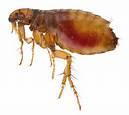Flea and Tick-borne Illnesses in Cats
- posted: Nov. 25, 2018
 Flea and Tick-Borne Illnesses in Cats
Flea and Tick-Borne Illnesses in Cats
Even though it is fall and we have already had one significant snowfall, we are still seeing patients with fleas and ticks at Patton Veterinary Hospital. Fleas can be active throughout the year as the adult fleas spend their lives on our pets while their eggs drop off and contaminate the environment. Ticks can also be found throughout the year as they can be active in temperatures as low as 35-40 degrees. There is no real flea or tick “season” and, while more prevalent in summer, they remain a threat all year long.
Almost everyone knows that Lyme disease is spread by ticks and affects dogs causing sore joints, fever and sometimes more serious issues like kidney failure. But, did you know that cats can also be affected by some diseases spread by both fleas and ticks?
Cats can be infected with anaplasmosis, a bacterial infection spread by Ixodes ticks, better known as deer ticks. Anaplasmosis also affects dogs. In cats, it can cause fever, loss of appetite and lethargy. The infection can be treated with the antibiotic doxycycline.
Cats are also at risk for two diseases spread by fleas: Bartonellosis and Mycoplasma infection. Several species of bartonella bacteria are spread by flea bites and can cause inflammation and infection of the eyes, heart, muscles and bones and often presents as a fever with swollen lymph nodes in some cats. Most cats do not become ill, but can be carriers of the disease. People, especially children, can be infected with bartonella bacteria if an infected cat scratches them or if an infected flea bites them, thus bartonellosis is also known as “cat scratch fever.” It causes swollen joints and fever in humans.
Mycoplasma bacteria are also spread by flea bites and can be spread from cat to cat by bite wounds and saliva. Mycoplasma causes a type of anemia known as hemolytic anemia which means the cat’s body breaks down its own red blood cells. Symptoms include lethargy, fever, pale gums, loss of appetite and an enlarged spleen. The anemia can be severe and sometimes fatal though treatment with antibiotics and other drugs may be attempted.
As you can see, fleas and ticks not only cause skin irritation to our pets, but they can also spread potentially serious diseases to cats, dogs and even humans. Don’t stop using flea and tick preventative in the winter as we do see both of these parasites throughout the year in Pennsylvania due to uneven winter weather. Ask our Patton staff about the best products to protect your pets with a quality flea and tick preventative all year round.
This blog brought to you by the Patton Veterinary Hospital serving Red Lion, York and the surrounding communities.
Sources:
https://www.merckvetmanual.com/circulatory-system/blood-parasites/hemotropic-mycoplasmas
Location
Patton Veterinary Hospital
425 E Broadway
Red Lion, PA 17356
